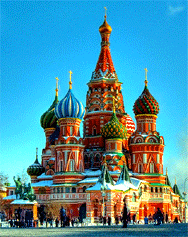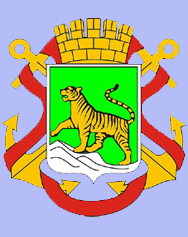| Introduction |
|
Values, as a stratum of the European Civilisation, incorporate a spectrum of developments. Heritage of social norms and traditional customs have to be taken into account; for instance, the family being the primary unit as a group within society. Hence, it is reasonable to consider the Civilisation's strata collectively. A brief account, however, can mention such aspects as: liberty, rule of law, democracy, secular governance, reasonably balanced socioeconomic conditions, privacy according to circumstances, protection of minority rights and, of course, a decisive stance against racism or racist-nationalism, inclusive of xenophobia. Humanitarian assistance and philanthropy in general are well established attributes globally. Immigration favouring the oppressed on a wider basis, protecting the environment and bioethics are examples of more recent developments. Initially, a significant progressive trend is categorised as a standard before it is classified as a value. Civilisation's values may have secular or non-secular origins as determined by its strata, thus involving development histories. Morals and ethics may be intently involved. Some values have long histories, for example, democracy. Although modern democracy developed independently from the classical Greek tradition, yet indirectly it has been an example. Faith, an outstanding stratum, has bestowed a great deal, including a set of cogent values, a fair number of which can now be classified entirely within secularity. In more recent times a set of values have been grouped and classified as human rights. They can be defined as civil and political rights of the individual in relation to the state. During the past centuries there have been trends and developments in various cultures that possess certain human rights characteristics. These, however, involved the privileged few. Currently one can list the following values as examples of human rights: right to life - inclusive of the subsistent right to food and water; human dignity - inclusive of assisting the handicapped and the underprivileged; safety from violence, right to a nationality, equality inclusive of gender and ethnicity, freedom of religion - as long as politicized characteristics are excluded, freedom of association, fair trial, peaceful protest, health care, right to education, freedom of movement within self-governing states, fair working conditions, right to property. Freedom of thought; freedom of speech and expression - including freedom of the media - as expected possess proportionality exclusions; for example: libel and defamation, as well as information relating to contemporary occurrences that imperil public safety and security. Freedom of information, protection of personal data, as well as health & safety are more recent developments advancing manifestly. An overview regarding global disparities among civilisations can reveal certain realities. Such factors demonstrate that discords among civilisations are most obvious when their values - inclusive of human rights - are considered. Disharmonious aspects, however, often disappear, or are at their minimum, when individual cultures - as for example nations and traditions - within the same civilisation are compared. As far as human rights are concerned, an authoritative global stance, of course, is indispensible; in this respect the United Nations' instruments remain most comprehensive. The aim is for all cultures, within all civilisations, to move forth mutually. Secular values, as projected by the European Civilisation, also advance upon the same avenues established by the United Nations. Nevertheless, it is expedient to consider and highlight all applicable aspects of the European Civilisation, inclusive of national cultures situated geographically at the periphery, yet located within the European Cultural Frontiers. Small nations and nation states, especially those with dangerous geopolitical exposures or dislocated populations, may require far greater help when subversively or violently challenged by their adversaries. Those at risk may include individuals, groups and, indeed, even entire nations - as proven by the past genocidal destructions. Hence, it is reasonable for human rights organisations, particularly those working with such peoples, to monitor developments constantly and be prepared for all adverse developments. The implementation of preventative measures, even before problems arise, may be beneficial for all concerned. Aspects regarding humanitarian aid organisations can also be taken into account, as they strive to achieve constructive results even under adverse conditions. It is morally justifiable for them - especially those conducting problematic international operations - to effectively circumvent unfair restrictions, particularly in regions where de facto peace has been established. The eradication of restrictions - may such barriers be internally or externally generated - regarding the operational zones, should remain a foremost objective. Safeguarding the Civilisation has to remain a paramount objective, as undermining its security and prospects will destabilise its values, consequently undermining human rights effectively. It is also necessary to take into account a rapidly changing world. The provision of a prudent human rights policy with wider and deeper contours - inclusive of effective implementation of international instruments and the provision of definitive information - is advisable. A clear understanding of issues is to the public benefit.
The European Civilisation and the Cultural Frontiers of Europe
The above title encompasses a number of major subjects. A minimalist approach can highlight primarily a number of well known facets and commence with the statement that the Cultural frontiers of Europe embrace the European Civilisation, which can briefly be defined by the following strata: the GRECO-ROMANstratum; CHRISTIANITY; the MEDIEVAL period, which embraces and consolidates the past, and establishes new standards, cultures and nations; the RENAISSANCE polishes and enhances most of its aspects; the AGE OF REASON examines the past and incorporates extensive new ideas and innovations with rational thought; the CONSUMER AGE – its origin is primarily rooted within the Industrial Revolution – has brought sweeping economic and sociological changes subsuming widespread industrialisation and urbanisation; the universally advancing Consumer Society has become a noted aspect of Globalization; and finally, the Civilisation is furthered significantly by its spectrum of VALUES fought for across the ages. The various aspects of the aforementioned strata have spread at diverse periods and velocities in history. European Cultural Frontiers, on the other hand, possess an impressive primacy of their own. They can be effectively classified as encompassing - with minor enclave type exceptions - nations belonging to the European Civilisation, thus consolidating a specific geography. That geography, classified as Greater Europe, is a continuous landmass, plus its islands. From a longitudinal point of view it stretches from Scandinavia to Armenia. From a latitudinal point of view, it stretches from Gibraltar to Vladivostok, hence maintaining impressive Atlantic and Pacific outlooks.
European
Cultural Frontiers: The Continental Frontier Zones The deep rooted past and a set of current realities reveal that significant external dangers effecting Europe emanate geographically from the south and the east. Vast oceans and maritime regions - some most inhospitable - situated at its western and northern regions, have effectively served as protective barriers. Currently, only certain stretches of the Mediterranean and Aegean seas possess serious exposures, yet significant sections of Continental land frontiers continue to be exposed most disconcertingly. Consequently, the geopolitical and strategic aspects in the south and east possess significantly different characteristics, hence they have to be dealt with accordingly. Only a small number of nations, situated within the European Cultural Frontiers, possess such strategic external land boundaries. Failure of their outlying zones can have severe consequences. The European Civilisation - inclusive of its values and national cultures - can be undermined broadly not only in the said demarcation zones, but additionally impact interior European regions as well. In this respect three outlying land frontiers can be taken into account.
The Southeastern Perimeter
The Southernmost Point
The land of Ararat is the most exposed of the three regions. Armenia,
a distinct mountainous Plateau with its zenith at Biblical Mount Ararat,
is situated south of the Caucasus Mountains. The Armenian nation was
formed upon it and has inhabited its land of origin for thousands of
years. In the past, however, Armenian kingdoms have expanded well beyond
their Plateau of origin such as up to the Mediterranean and Caspian
Seas. No nation inhabiting the Plateau predates the Armenians. States
such as the Republic of Armenia and Nagorno-Karabakh, or to give the
latter's correct original title, Artsakh, are formed upon its eastern
sector.
Presently, the part of the Plateau of Armenia inhabited by the Armenian population falls within the Cultural Frontiers of Europe. The latter's continental frontiers are the most southerly and thus possess great significance, but also place it in danger, as Europe is provided with a reasonable southerly outreach. Indeed, past developments reveal that small nations like Armenia, when situated at the forefront of their civilisation's Cultural Frontiers, and assaulted by one or more genocidial nations from an opposing civilisation, can suffer extensively and, at times, practically to the point of total destruction. It is indubitable that Armenia and the Armenians have been subjected to the worst human rights violations, yet still managed to survive.
|
|||||||||||









